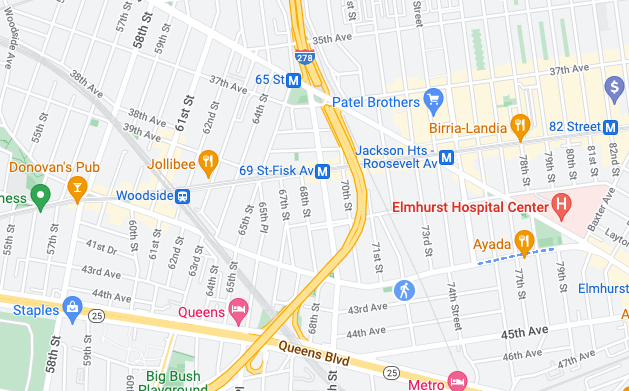At our orthodontic practice in Woodside, Queens, we understand that each patient’s needs and preferences are unique, especially when it comes to choosing the right types of braces. Whether you're a teenager eager to perfect your smile without the look of traditional braces, or an adult seeking a discreet treatment option, our array of braces offers solutions tailored to meet diverse needs. Our goal is to provide effective, comfortable, and aesthetically pleasing orthodontic care with the types of braces NY patients love.
1. Traditional Metal Braces
Traditional metal braces have been a reliable choice for orthodontic correction for decades. They consist of high-grade stainless steel brackets and wires that are both durable and effective in correcting a wide range of orthodontic issues, from simple misalignments to more complex bite and spacing issues. Metal braces are a popular choice for their efficiency and cost-effectiveness, making them a staple in orthodontic care.
Advantages:
- Highly effective for a variety of dental alignment issues.
- Cost-efficient option compared to other types of braces.
- Customizable with colored bands for a more personalized and fun look.
2. Clear Ceramic Braces
Clear ceramic braces are a fantastic alternative for patients who prefer a less noticeable option than traditional metal braces but require the strength that metal brackets provide. These braces feature clear or tooth-colored ceramic brackets that blend seamlessly with your natural teeth, offering discretion while you undergo treatment. Ideal for both teenagers and adults, ceramic braces provide the same effectiveness as metal braces with an added aesthetic appeal.
Advantages:
- Subtle appearance makes them less visible than metal braces.
- Effective treatment for a wide range of orthodontic issues.
- Boosts confidence as they are less noticeable during social interactions.
3. Self-Ligating Braces
Self-ligating braces represent a modern twist on traditional braces. They utilize a sliding mechanism that holds the wire, allowing it to move freely. This innovation reduces the friction and pressure that traditional braces might exert on the teeth, potentially decreasing discomfort and the overall time needed for treatment. Self-ligating braces can be made from the same materials as traditional or ceramic braces, offering a versatile and efficient treatment option.
Advantages:
- Faster treatment times due to reduced friction between the brackets and wires.
- Less frequent adjustments needed, making your orthodontic visits more convenient.
- Improved oral hygiene as they are easier to clean without the elastic ties used in traditional braces.
4. Clear Aligners
Invisalign and other clear aligner systems offer an innovative and nearly invisible way to straighten your teeth without wires or brackets. Instead, the system uses a series of custom-made, clear plastic aligners that fit snugly over your teeth and gently guide them into their correct positions over time. This method is particularly popular among adult patients due to its discretion and flexibility, as the aligners can be removed for eating, brushing, and flossing.
Advantages:
- Virtually invisible, providing a discreet treatment option.
- Removable, allowing for better oral hygiene and no dietary restrictions.
- Comfortable, with no sharp edges or brackets that could irritate the mouth.
Choosing the Right Type of Braces
When deciding on the best types of braces for your needs, consider factors such as your lifestyle, budget, aesthetic preferences, and the complexity of your dental issues. Our orthodontist will conduct a thorough evaluation to recommend the most suitable option that aligns with your personal and medical requirements. We aim to ensure that each patient receives personalized, effective treatment plans that reflect their individual needs and goals.
Why Choose Us?
Choosing the right orthodontist is crucial for a successful orthodontic treatment. Our practice is committed to providing state-of-the-art care with a personal touch. We use the latest advancements in orthodontic technology and techniques to ensure that you receive the highest quality care. Moreover, our friendly and professional staff is dedicated to making your orthodontic experience as comfortable and rewarding as possible.
We understand the importance of having a beautiful and healthy smile. That's why we offer the types of braces NY patients trust and recommend. Whether you're considering clear aligners, clear ceramic braces, traditional metal braces, or self-ligating braces, we are here to guide you through every step of your orthodontic journey.
We'll Find Your Ideal Treatment Option
Embracing orthodontic treatment is a step towards not only improving your smile but also boosting your oral health. With the various types of braces available at our Woodside practice, you have the flexibility to choose a treatment that fits your lifestyle and meets your aesthetic needs. Schedule a consultation today with our experienced orthodontist to explore how we can help you achieve the smile you've always wanted. Remember, a beautiful smile is within reach, and it starts with choosing the right types of braces and the right orthodontist to guide you through your journey.
